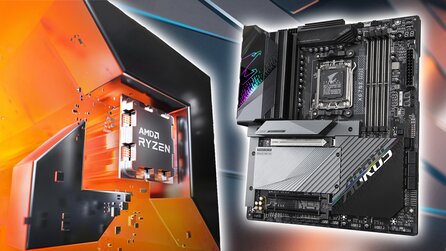Ray tracing in today GPUs
GameStar: If we only speak about transistors, modern graphics chips like NV40 should be able to perform ray tracing in real time. But it was not build for that - current concepts of a ray tracer in a pixel shader run slow. Will we see real-time ray tracing in todays video cards or do we need a complete new architecture with, lets say, a RISC processor for tracing the ray into the scene?
Kirk:
Researchers have already demonstrated ray tracers running on GPUs that are far faster than CPUs or special purpose hardware. A modern GPU such as the GeForce 6800 has about 40x the floating point processing power of a 3 GHz Pentium 4 processor, and a general programming model with looping and branching, as well. Anyone who believe that GPUs are not yet good at ray tracing is a few years behind the times. :-)
Slusallek:
While it is possible to implement ray tracing on the today's programmable GPUs, they are not well suited to the task. Even though they offer much higher raw processing power, the final ray tracing performance we and others see is well below even that of current CPUs. GPUs are optimized for simple linear code while good ray tracing algorithms need to execute complex control flow and even recursive computations. These are hard to map to the GPU at all and then do not perform too well.
In contrast we have recently implemented a prototype of a custom ray tracing based graphics card using a single Xilinx FPGA chip. The first results show that this really simple hardware running at 90 MHz and containing only a small fraction of the floating point units of a rasterization chip already performs like a 8-12 GHz Pentium 4. In addition, it uses only a tiny fraction of the external memory bandwidth of a rasterization chip (often as low as 100-200 MB/s) and therefore can be scaled simply by using many parallel ray tracing pipelines both on-chip and/or via multiple chips.
What this shows is that current GPUs are rather inefficient and not well suited for non-trivial code like ray tracing and that multi-core parallel CPUs or dedicated ray tracing hardware are a more promising approach. Maybe newer GPUs can change this but I am skeptical.
In the end I do not care which hardware my ray tracer in running on as long as it is fast. All that matters is that our research provides the end user and game designer with the best possible graphics and gaming experience -- and this requires ray tracing.





Nur angemeldete Benutzer können kommentieren und bewerten.
Dein Kommentar wurde nicht gespeichert. Dies kann folgende Ursachen haben:
1. Der Kommentar ist länger als 4000 Zeichen.
2. Du hast versucht, einen Kommentar innerhalb der 10-Sekunden-Schreibsperre zu senden.
3. Dein Kommentar wurde als Spam identifiziert. Bitte beachte unsere Richtlinien zum Erstellen von Kommentaren.
4. Du verfügst nicht über die nötigen Schreibrechte bzw. wurdest gebannt.
Bei Fragen oder Problemen nutze bitte das Kontakt-Formular.
Nur angemeldete Benutzer können kommentieren und bewerten.
Nur angemeldete Plus-Mitglieder können Plus-Inhalte kommentieren und bewerten.